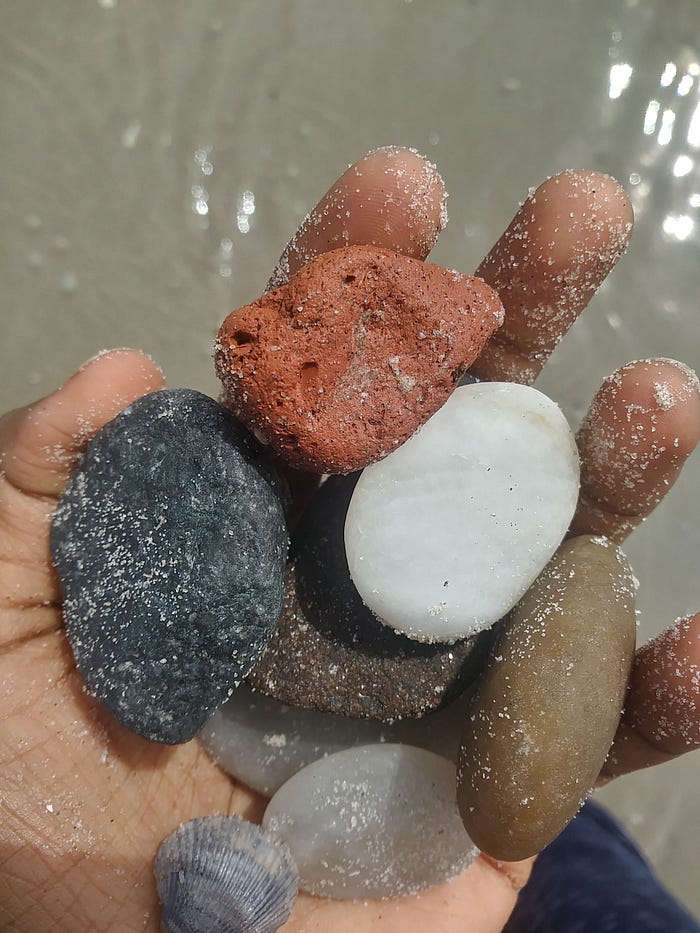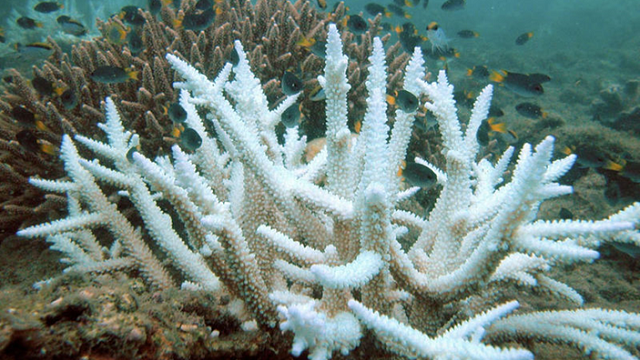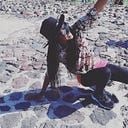Pitch Black by Simone Johnson
“A society must assume that it is stable
but the artist must know
and he must let us know
that there is nothing stable under heaven.”
— James Baldwin
I’ll never forget that feeling — the one that started as a faint ripple and over a couple of hours grew into a surprising intense ebb and flow.
I quickly left my shared apartment in Jackson Heights, Queens to do what one of my roommates did earlier that morning; stock up on food and hang tight. COVID-19 had reached New York City.
Lines went around the corner at every grocery store in my neighborhood. They were too long to wait on; I feared no food or water would be left. I hopped on the 7 train to go to a store in Manhattan. I had just moved to Jackson Heights so I wasn’t familiar with the area. I didn’t think to Google stores close by, I just saw lines and lines and lines and out of panic, had it on my mind to find another store. Well, I did. But that store had a line too. I told myself to wait, this was my only chance. I took a giant exhale of relief when I finally reached the top of the line and was allowed to enter. When I got inside there was hardly any food left. I had never seen a grocery store like that before, and people rushed by me grabbing whatever they could. I saw older people moving slowly with their grocery carts, unable to keep up with the hustle. It was like being in a movie, a real live movie! The store started turning and blurring. Is this really happening?
“What did you get?” I ask my roommate. She points to bags of potatoes and more grocery bags
“I have a lot of rice and beans too” I reply
The store turns, slides and tips forward, I emerge out of it changed. As I briefly stare up at an ordinary blue sky and tall buildings of the city, it was then that I felt a soft, potent panic — a unique emotional moment I’ll never forget. I leave the store and go to another one where there luckily are no lines. I stock up on as much food as I have money for and can carry, head back home, and soon after, the city shuts down.
Out of the entire year in 2020, that was one of the most surreal times in my life. Since then, almost everyone I have talked to has mentioned time in one way or another — how weird time is, how off it is, how slow, discombobulated, non-linear, disorienting it is.
I’m pretty sure we all went through a time warp last year.
In 2020 I live in a mixed reality world, spending a lot of time on Zoom and grasping at any chance I can get to go outside and see the sky, plants and hear any city noises. The techno-bio reality of the pandemic impacts my mind and body. After the initial shock of the shut down and the unfamiliarity of such a precarious situation starts seeping into me, I soon realize that the art world and art-making will perhaps never be the same — at least not this year. The unknown and uncertainty are the most wild I have ever known. But what is very clear and made itself certain down the road, is that we are loosing so much. As the year goes on and I get somewhat used to the state of things. I go in and out of thinking about art. Survival is front and center.
Fast forward to last November, I find myself living in Bedstuy, Brooklyn and things have gotten considerably better. I’m ruminating on an idea for a photoshoot for “The Oceans are Changing”; a video, photography and performance art project I started in late 2019. I want to capture the project which focuses on the Abyss and includes the 2020 timewarp, and so photographer Alyssa Rapp and I meet at Beach 44 in Far Rockaway, Queens.
Since temporarily moving to Bedstuy this Fall I have been going to Beach 44 frequently. The A train is my saving grace. In 30–40 minutes I find myself standing in front of the sea, skygazing and collecting beach rocks of all different shapes, sizes and textures. I go in the water up to my ankles and slowly inch forward up to my knees. Suddenly I catch glimpses of bright green sparkling seaweed floating in the water, and when I walk onto the sand ‘oohing and awing’ my way down the shoreline, I happily collect moons of white silica, craters of red rock, smooth charcoal black rocks, and even light blue sea glass.

I’m grateful that Alyssa drives from Staten Island to meet me there, and for her encouragement, care and creative eye. Earlier that morning I was considering cancelling the photoshoot; I was tired and unsure. It was still the time warp after all.
I call this series of photography “Deep Sea Time Warp 2020” and leave the viewer to interpret each photo however they will. It is the second iteration of “The Oceans are Changing”

“The Oceans are Changing” is a part of Oceanic Wandering/Ways of Knowing, a practice within my water art practice. In Fall 2019 I participated in Performing Knowledge at the Martin E. Segal Theatre Center, a one day festival of performance-lectures where the dramaturg I worked with told me about Oceanic Theorizing. I decided that exploring the ocean, which immediately directed me to exploring my relationship with my imagination, could be a whole practice in itself! And I purposefully wanted to wander throughout the ocean.
I started “The Oceans are Changing” to research the effects of climate change on the ocean and called the first iteration “Ocean Radio”. I could have ended up anywhere in the ocean, but I knew from the beginning that I wanted my first site of exploration to be in the Abyss, and it turns out climate change is reaching the abyssal zone. The impact isn’t the same as what is happening in surface waters, but because of the relationship between the different layers of the ocean, this place is also experiencing the impact of climate change.
I’m not sure how I landed on surrealism, but I decided to use this literary and visual genre as a mode of research and expression, and in some ways processing life through a surrealist lens prepares me for the actual odd, magical and surreal world we live in.
When I started this project in 2019, I also happened to be personally experiencing a surreal year. I never knew that the following year would also have its own surrealist twist. The Abyss was the perfect place to explore, a place that paralleled my own life in many ways.
I enter the dark theater, the Abyss, and pass out six eggs to audience members while my voice plays in the background. I walk over to a small table and put the hurricane algae culture lamp down. Underneath is my Ocean Radio Altar with a big thermometer and two large plastic eggs on each side filled with three raw eggs resting on white flowers.
Somehow, in all my uprooting, I found myself back in New York applying to participate in Performing Knowledge, a one day festival of interdisciplinary knowledge performances
I finish telling the audience “I didn’t realize the oceans were absorbing so much heat”. Then I reach and grab carbon in the air absorbing it into my water body, trying to understand how the ocean has been trying to heal the Earth.
Oceanic Wandering/Ways of Knowing is a part of my water art practice. In this particular year long iteration I explore, learn from and world-make within the Abyssal Zone, examining my relationship with my imagination as well as the impact of climate change on the ocean and marine life through Surrealism and other modes of research
I walk to an invisible edge, where below there is the Hadal Zone, and sit down. Radio static sound effects play and I ask out loud, “hello, hello can anyone hear me?” over and over again. Someone in the audience responds. Suddenly inaudible whispering starts and I run to my Ocean Radio Altar and start praying one of many Ocean Prayers, and then I curl up in a ball to go to sleep, holding one of the plastic eggs and the thermometer against my chest as the audience watches a video clip from the film Planet Ocean
This year has been the most trust-bending whirlwind of loss, confusion, fear, uncertainty and death
I wake up, look around and start improvising throughout the space, trusting my intuition and finding some flow in a place I am deeply unfamiliar with; the unconscious (?) and illogical. My body starts absorbing carbon again, doing the same movement phrase as before, taking in more and more. I run to grab my hurricane lamp. Looking up, I start blowing a whistle as I swing the lamp back and forth. The oceans are changing!
Slowly, I walk backwards bringing the lamp to my side. I find myself at the edge again, sitting, when I suddenly catch a glimpse of something luminescent [ “Ocean Radio” submitted to Emergency Index, 2019 ]
I am excited to return to “Ocean Radio” in 2021 because I only had two months to develop the piece when I first started it, and that wasn’t enough time. With this return, I still plan on continuing to research climate change’s impact on the ocean, as well as exploring my relationship with the more than human world, especially with other animals and particuarly with marine life, researching ways to connect with animals in person, learning about animal communication and speculating on what it could be like to “get in contact with each other”.
PRESS PLAY: https://www.youtube.com/watch?v=KP-l42ZHFyE
“Deep Sea Time Warp 2020” is the second iteration and a non-linear continuation of “Ocean Radio”. Although they diverge from a common research point, it feels like these iterations want to stay together and be in conversation with each other. For the second iteration I am focusing on what it means to be an ocean researcher, ocean policy like the Blue New Deal and science communication. I have decided that a few outcomes of this iteration is to create my own Blue New Deal, mostly as artistic commentary.
Even though I have just started, I know that Oceanic Wandering/Ways of Knowing is inherently a multispecies collaboration, and the first non-human collaborator I’m working with is Algae, who I happened to come across in 2019 while visiting Leah Harper, a bioartist who at that time was in residence at Works on Water. I worked with the species Nannochloropsis in “Ocean Radio’’ collaborating with Leah to make a head and hurricane lamp fusing light and Nannochloropsis for my performance.

I didn’t work with Algae for the second iteration, but this year I am returning to this collaboration, with Algae guiding my inquiry and research around the relationship between oceanic and energy futures which connects to climate change in different ways. I’m currently seeking out energy education when I have time, especially around solar and tidal energy. Solar Protocol has been a big inspiration, especially the solar logic on which their project is built on. I do think if we were to expand thought leadership, eldership or Earth community leadership, Algae would fit right in here. I feel Algae, in all Algae’s expressions, is encouraging conversations, skill-building and spiritual reconnection around energy, especially since particular Algae species are being studied for biofuel.
I think initially researching Blue New Deals or any kind of ocean policy, I am really interested in centering marine life and marine habitat wellness before human beings and before our economies. Sometimes I feel like the economy and jobs are before marine life and habitat restoration, and it makes sense to me that the health and prosperity of ocean life leads to our health and prosperity. I’m not saying anything new. There are many ancient Indigenous knowledges that talk about being in a right relationship with Earth, which is covered by 70% of water.
But the question begs, what is happening with/in the ocean?

I’ve talked to an ocean scientist to make sure I am understanding how climate change is impacting the ocean and to gain clarity on climate information that is confusing. She recommended I take a course on oceanography. In our converstaions I noticed that we had to do a lot of breaking down and clarifying, which I saw as a form of translation. We understood each other, but we were speaking in different tounges, her as a scientist and me as an artist. We would use different words that meant the same thing. This is why in my artistic practice overall, I am interested in communication.
I am open to being a learner in public, so let’s see if I get this right: the ocean, which is a glorious, watery multiverse, is warming because it is absorbing excess heat and carbon in the atmosphere in an attempt to balance the concentration of heat and gas emissions in the air. I understand this action as a function of the ocean, but also an attempt to heal a deep planetary imbalance. It’s important to say that the planet is warming at different rates and I learned one of the reasons we moved from the word “global warming” to “climate change” is because the former is too blanket of a term, and doesn’t make space for the specific climate experiences particular places are having. Although the ocean is mitigating a deep imbalance, it is coming at a cost with ocean acidification, coral and kelp forest deaths, sea level rise and extreme weather events. I am sure there is more happening than I have alluded to here.
To me, conversations about climate change could resolve themselves in questions about our relationship with Earth. These questions are fertile with healing, possibility and Life. Entertaining dystopia and focusing on the planet ending is well . . . entertaining, and feeds our fears. However, a dystopian framework can also push people to generate beneficial change and innovation. What questions are we asking and what can be reframed? What if we ask, “what is our relationship with Earth?” and “what could our relationship with the Earth be like?”
When I read articles about climate change and the ocean I am not so much scared as being taken aback by what is happening and wanting to know more about what’s going on. I realize that in a sort of superficial way, I understand that fossil fuels are a cause of climate change, but I didn’t start making the connections between fossil fuels, energy and the ocean until recently.
My energy story is that I grew up learning diddly squat about energy. As a kid growing up you hear about bills, and especially the utility bill. Why don’t they just call it an energy bill? It wasn’t laid out for me that almost everything I used between turning on lights, to being on the computer to washing clothes required energy. I keep telling people that it was only until I started paying my own bills did I realize heat wasn’t free. When it got cold and the heat would come on in our apartment, it was because we were cold. That’s just what happened. It never crossed my mind, that if you can’t afford to pay for heat, then you’re just going to be cold. Why do people have to pay for something their bodies can’t help? Why are we paying for all the things we need to sustain our bodies? My other energy story is that I can honestly say I don’t know much about the energy infrastructure where I live. And now I’m kind of hell bent on learning more about how energy supports society, different energy forms and how to work with solar power in useful and creative ways.
The ocean is incredible, and I’ve only just begun.
PRESS PLAY: https://www.youtube.com/watch?v=sCc3UtzZDEo
In “Deep Sea Time Warp 2020” I came up from the Abyss, from a place I will never experience. I will never be able to physically be there and see who lives there.
But in surreal fashion, I have been to the deep sea, over and over and over again.
Simone is an interdisicplinary artist, researcher and cultural worker currently based in NYC. Learn more about her work here.
“Pitch Black” is a work in progress writtin alongside “Deep Sea Time Warp 2020”. Simone will continue to build this piece of writing and share an updated version during late summer 2021.
“Deep Sea Time Warp 2020” is currently showing at “Nothing Stable Under Heaven: A Showcase of Black Art” at the Oxbow Gallery April 1 to April 25, 2021, curated by artist Marjorie Morgan. You can visit the virtual exhibit here.
READ: “James Baldwin on the Creative Process and the Artist’s Responsibility to Society” by Maria Popova on Brain Pickings
